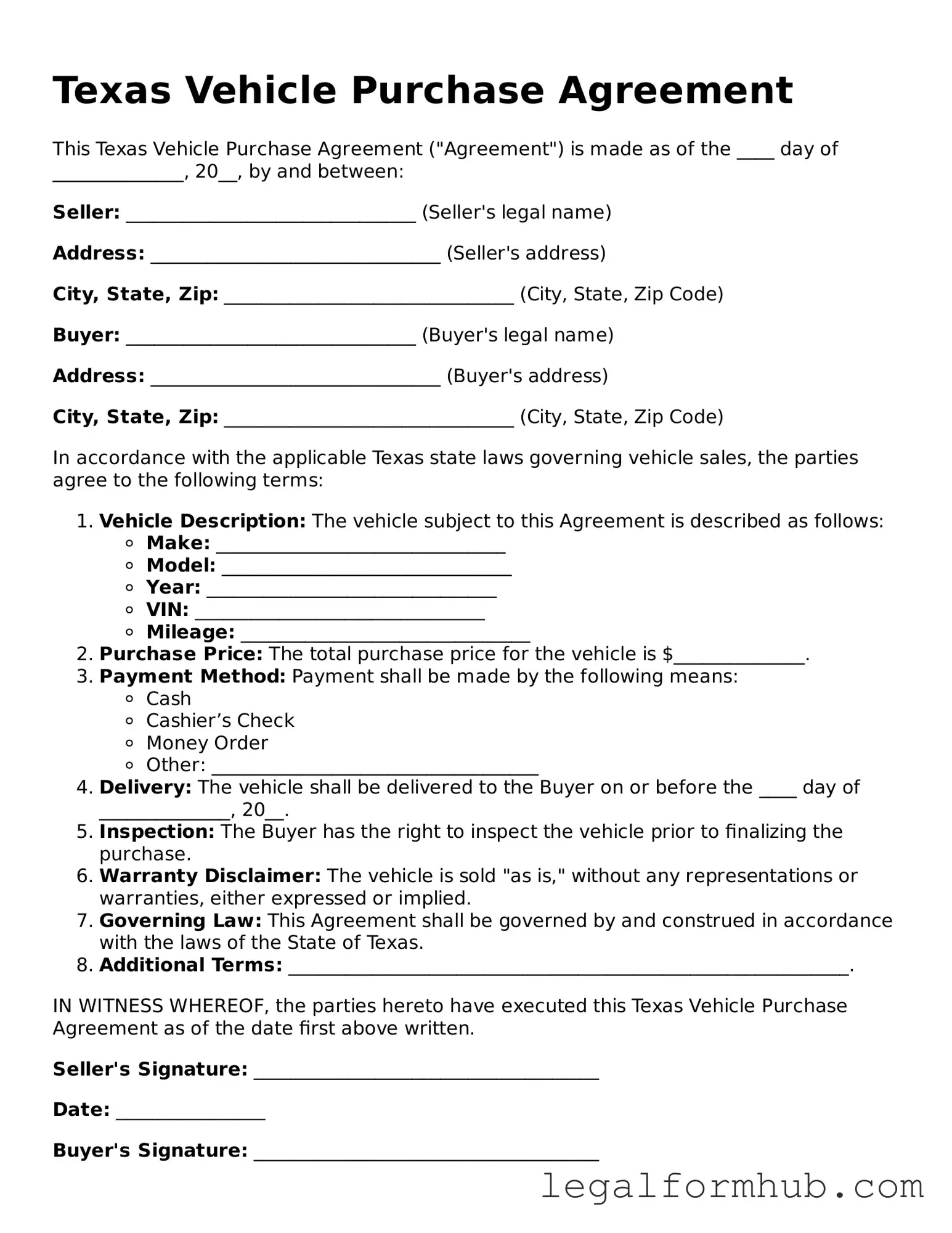The Texas Vehicle Purchase Agreement form shares similarities with the Bill of Sale. Both documents serve as proof of a transaction between a buyer and a seller. A Bill of Sale typically includes details about the vehicle, such as the make, model, and VIN, along with the purchase price. Like the Vehicle Purchase Agreement, it also requires the signatures of both parties to validate the transaction, ensuring that ownership is officially transferred from the seller to the buyer.
Another document that resembles the Texas Vehicle Purchase Agreement is the Vehicle Title. The Vehicle Title is a legal document that establishes ownership of a vehicle. While the Vehicle Purchase Agreement outlines the terms of the sale, the title is necessary for the buyer to register the vehicle in their name. Both documents must be properly completed and signed to facilitate a smooth transfer of ownership.
The Sales Contract is another document similar to the Vehicle Purchase Agreement. This contract outlines the terms and conditions of the sale, including payment methods, delivery details, and warranties. Like the Vehicle Purchase Agreement, it serves to protect both the buyer and seller by clearly stating their rights and obligations throughout the transaction process.
When considering vehicle transactions, it is important not to overlook the significance of properly completing a Bill of Sale. This document solidifies the agreement between buyer and seller, making the transfer of ownership official. To ensure all necessary details are accurately captured, you can utilize resources such as Fill PDF Forms to streamline the process and mitigate any potential misunderstandings.
The Purchase Order is also comparable to the Texas Vehicle Purchase Agreement. A Purchase Order is typically used in commercial transactions to authorize the purchase of goods or services. In the context of vehicle sales, it can outline the specifics of the vehicle being purchased, the agreed-upon price, and the terms of payment. Both documents serve as formal agreements that confirm the intent to complete the sale.
The Lease Agreement shares some characteristics with the Vehicle Purchase Agreement, particularly in terms of outlining the terms of use. While a Vehicle Purchase Agreement indicates a sale, a Lease Agreement details the terms under which a vehicle can be used for a specified period. Both documents require signatures and provide legal protection for both parties involved in the transaction.
The Financing Agreement is also similar, especially when a buyer needs a loan to purchase a vehicle. This document outlines the terms of the loan, including interest rates, repayment schedules, and any collateral involved. Like the Vehicle Purchase Agreement, it is essential for defining the financial obligations of the buyer and ensuring that both parties are aware of their responsibilities.
Lastly, the Warranty Agreement can be compared to the Texas Vehicle Purchase Agreement. A Warranty Agreement provides assurances regarding the condition of the vehicle and any repairs that may be necessary after the sale. While the Vehicle Purchase Agreement focuses on the sale itself, the Warranty Agreement adds an extra layer of protection for the buyer, ensuring that they have recourse if the vehicle does not meet certain standards after the purchase.
